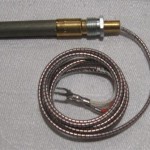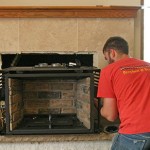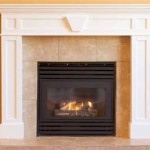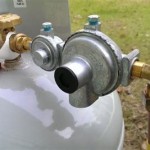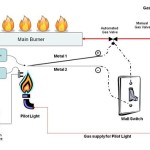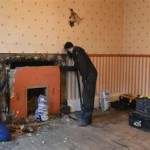Gas Insert Fireplace Installation: A Comprehensive Guide
Gas insert fireplaces offer a convenient and efficient alternative to traditional wood-burning fireplaces. They provide the ambiance and warmth of a fire without the mess, extensive maintenance, and safety concerns associated with burning wood. This article offers a comprehensive guide to gas insert fireplace installation, covering essential considerations, steps, and safety precautions.
Before embarking on the installation process, it’s crucial to understand the core components of a gas insert fireplace. These include the insert itself, which contains the burner, logs (or other decorative media), and a glass front; the gas line that supplies fuel to the insert; the venting system that safely exhausts combustion byproducts; and the control system, which regulates the flame and heat output. Each component plays a vital role in the safe and efficient operation of the fireplace.
A successful gas insert fireplace installation begins well before the physical work commences. Careful planning and preparation are paramount to ensuring a safe, compliant, and aesthetically pleasing outcome. This initial phase involves evaluating the existing fireplace, selecting the appropriate insert, and obtaining the necessary permits and professional expertise.
Assessing the Existing Fireplace and Chimney
The existing fireplace and chimney must be thoroughly inspected to determine their suitability for a gas insert. This evaluation should be conducted by a qualified professional, such as a certified chimney sweep or a licensed gas technician. Key aspects to assess include the chimney’s structural integrity, flue size, and overall condition.
The chimney must be free from cracks, blockages, and other defects that could compromise its ability to safely vent combustion gases. The flue size must be compatible with the gas insert's venting requirements, as specified by the manufacturer. An undersized flue can lead to incomplete combustion and the buildup of dangerous carbon monoxide.
If the existing chimney is found to be unsuitable, it may need to be relined with a properly sized liner designed for gas appliances. This involves installing a new metal liner, typically made of stainless steel, inside the existing chimney to provide a safe and effective venting pathway. Relining can be a complex task and should always be performed by a qualified professional.
In addition to the chimney, the fireplace itself should be examined for any structural issues. The firebox opening must be of sufficient size to accommodate the gas insert. Any necessary modifications to the fireplace opening should be made before proceeding with the installation.
Selecting the Correct Gas Insert
Choosing the right gas insert is crucial for achieving optimal performance and aesthetic appeal. Gas inserts are available in a variety of sizes, styles, and heat output capacities. The selection process should be based on the size of the room, the desired level of warmth, and personal aesthetic preferences.
BTU (British Thermal Unit) output is a key factor to consider. BTU measures the amount of heat produced by the insert. A larger room will require an insert with a higher BTU output to effectively heat the space. Conversely, an insert with an excessively high BTU output in a small room can lead to overheating and discomfort.
Gas inserts are available in different fuel types: natural gas and propane. The choice of fuel depends on the availability of gas lines and the preference of the homeowner. Natural gas is typically less expensive than propane, but propane offers greater flexibility in terms of location, as it can be stored in tanks.
Consideration should also be given to the venting requirements of the gas insert. Some inserts require direct vent systems, which vent directly through the wall or roof. Others use natural draft venting, which relies on the natural buoyancy of hot gases to exhaust through the chimney. The venting system must be properly installed to ensure safe and efficient operation.
Aesthetic considerations are also important. Gas inserts are available with a variety of log sets, flame patterns, and decorative options. The selection should complement the existing décor of the room and create the desired ambiance.
Obtaining Permits and Hiring Professionals
Gas insert fireplace installation typically requires permits from local building authorities. These permits ensure that the installation complies with applicable building codes and safety regulations. Contacting the local building department to inquire about permit requirements is a crucial step in the planning process.
Hiring qualified professionals is essential for a safe and successful gas insert fireplace installation. A licensed gas technician should be responsible for connecting the gas line to the insert and ensuring that all gas connections are leak-free. A certified chimney sweep or a licensed contractor should inspect the chimney and install the venting system.
Attempting to install a gas insert fireplace without the necessary expertise and permits can be dangerous and may result in code violations, gas leaks, or carbon monoxide poisoning. It is always best to rely on qualified professionals to handle this type of installation.
The installation process itself involves several key steps, each requiring precision and adherence to safety guidelines. These steps include preparing the fireplace opening, installing the gas line and venting system, and connecting the insert.
Before commencing the installation, the area surrounding the fireplace should be protected with drop cloths to prevent damage from dust and debris. The fireplace opening should be thoroughly cleaned to remove any soot or creosote buildup. Any necessary modifications to the fireplace opening should be made at this stage.
Connecting the Gas Line and Venting System
The gas line must be properly sized and connected to the gas insert in accordance with local building codes and the manufacturer's instructions. A licensed gas technician should perform this task, ensuring that all connections are leak-free. A gas shutoff valve should be installed near the insert for safety and maintenance purposes.
The venting system must be installed in accordance with the manufacturer's specifications and applicable building codes. The vent pipes should be properly sized, connected, and supported to prevent sagging or leaks. The venting system must be designed to effectively exhaust combustion gases to the outside of the building.
For direct vent systems, the vent pipes must be properly sealed to prevent the infiltration of outside air or the escape of combustion gases. For natural draft venting systems, the chimney liner must be properly insulated to maintain adequate draft. Failure to properly install the venting system can result in dangerous carbon monoxide buildup.
Installing and Securing the Gas Insert
Once the gas line and venting system are in place, the gas insert can be carefully positioned inside the fireplace opening. The insert should be centered and leveled to ensure proper operation and aesthetic appeal. The insert should be secured to the fireplace structure using screws or other fasteners, as specified by the manufacturer.
The gas insert should be connected to the gas line and the venting system. All connections should be checked for leaks using a gas leak detector. The glass front of the insert should be securely attached, and the decorative logs or other media should be carefully arranged according to the manufacturer's instructions.
After the installation is complete, the gas insert should be tested to ensure that it is functioning properly. The flame pattern, heat output, and venting system should be checked to verify that they are operating within acceptable parameters. The homeowner should be instructed on the proper operation and maintenance of the gas insert.
Safety is of paramount importance when installing and operating a gas insert fireplace. Adhering to safety precautions can prevent accidents, gas leaks, and carbon monoxide poisoning.
Carbon Monoxide Detectors and Gas Leak Detection
Carbon monoxide is a colorless, odorless gas that is produced by the incomplete combustion of fossil fuels, such as natural gas and propane. Carbon monoxide poisoning can be fatal. Installing carbon monoxide detectors throughout the home is essential for protecting against this hazard. Detectors should be placed near sleeping areas and on each level of the home. The detectors should be tested regularly and replaced according to the manufacturer’s instructions.
Gas leaks can also pose a significant safety risk. Gas is flammable and can explode if ignited. Installing a gas leak detector near the gas insert can provide an early warning of a gas leak. The detector should be tested regularly and replaced according to the manufacturer’s instructions.
If a gas leak is suspected, it is crucial to evacuate the premises immediately and contact the gas company or the fire department. Do not use any electrical appliances or open flames, as these could ignite the gas. The gas leak should be repaired by a qualified gas technician before the gas insert is used again.
Regular maintenance is essential for ensuring the safe and efficient operation of a gas insert fireplace. This includes cleaning the glass front, inspecting the venting system, and checking for gas leaks.
The glass front of the gas insert should be cleaned regularly to remove any soot or residue buildup. A glass cleaner specifically designed for gas fireplaces should be used. Avoid using abrasive cleaners, as these can scratch the glass. Cleaning the glass improves the aesthetic appearance of the fireplace and ensures that the flame is clearly visible.
The venting system should be inspected annually by a qualified chimney sweep or a licensed contractor. The inspection should check for any blockages, leaks, or damage to the vent pipes. Any necessary repairs or replacements should be made promptly.
The gas connections should be checked periodically for leaks using a gas leak detector. If a leak is detected, it should be repaired immediately by a qualified gas technician. Regular maintenance can help prevent gas leaks and ensure the safe operation of the gas insert.

How To Install A Fireplace Insert Diy Save Money

Fireplace Insert Installation Wood Inserts Gas Pellet And Electric

Lodi Wi Installing Fireplace Insert Remodel

Convert To Gas Installing Fireplace Inserts Doctor Flue

Fireplace Installations Near Dc Chimney Experts

Custom Installation Of Fireplace Inserts Insert Installations Sierra Hearth And Home

Ventless Gas Fireplace Insert Installation Framing Wall For

32 Dvs Gas Fireplace Insert Eau Claire Hearth

How To Install A New Gas Fireplace Insert This Old House

Fireplace Insert Guide Fireplaces Direct Learning Center
Related Posts

